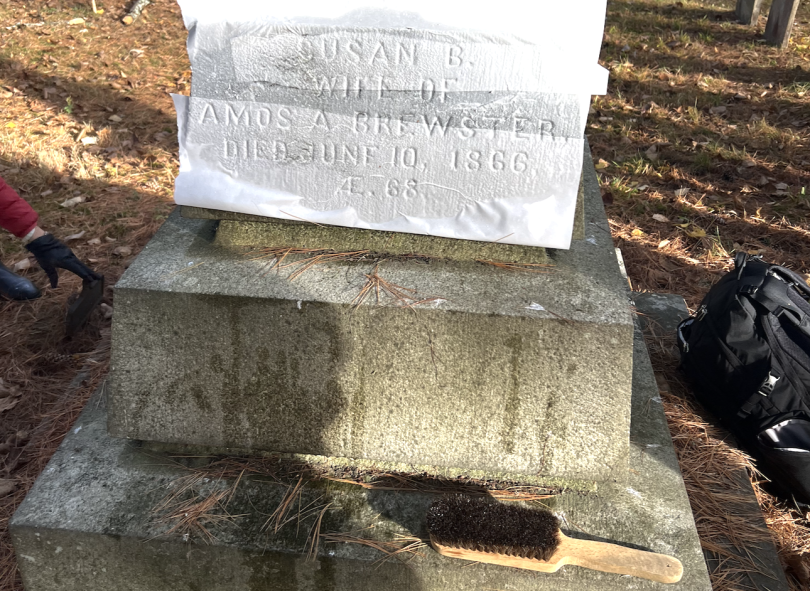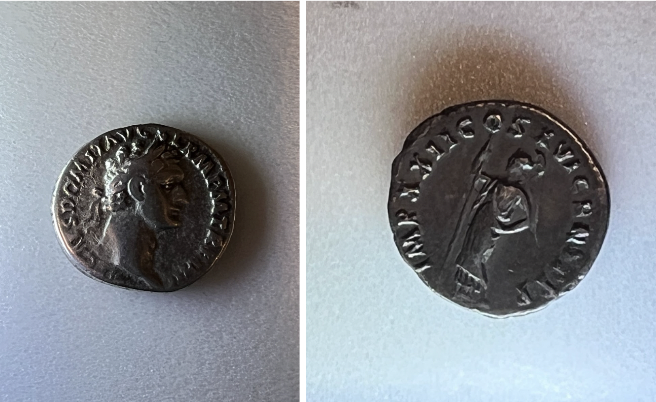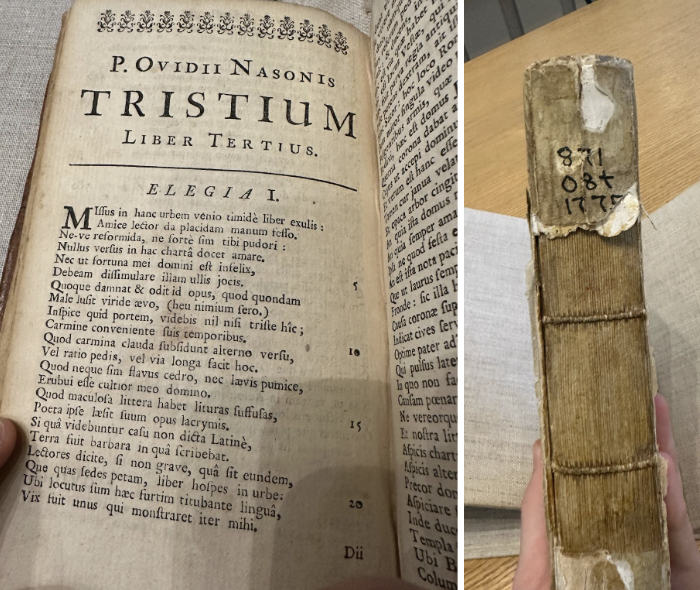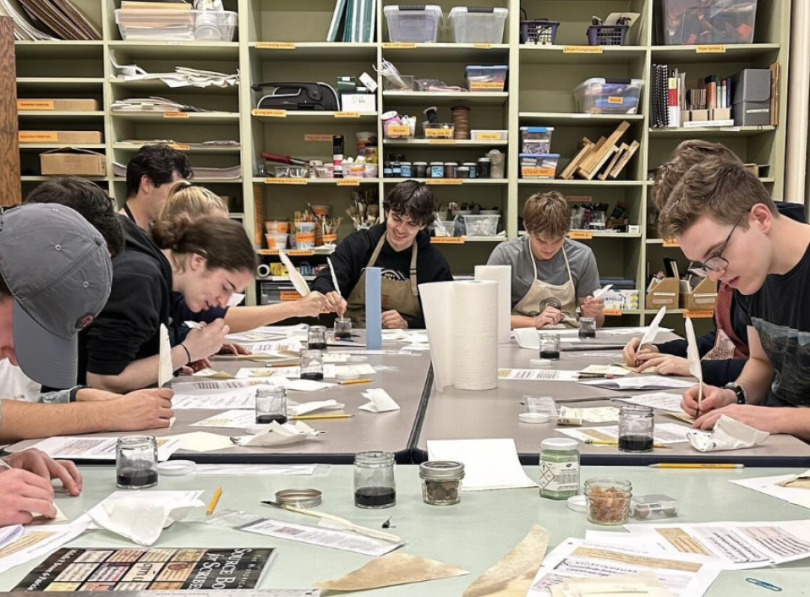

Lauren Halsey

You are here

Latin at Dartmouth
To fulfill my language requirement at Dartmouth, I decided to take the introductory Latin 1-3 sequence. I loved the language and department so much that I continued by taking "Topics in Latin: The Landscape of Latin Literature" (Latin 10.01)—which also counted towards my literature (LIT) graduation requirement.
While most of our coursework revolved around learning the language, we had a few in-class excursions to the local graveyard, the Hood Museum, the Rauner Special Collections Library, and the Book Arts Workshop. In this post, I will recap some of our Latin excursions!
Latin 1 brought us to the local graveyard, where we made squeezes—reverse paper impressions—of the inscriptions on gravestones. To do this, we took a piece of paper and hit a specially made brush against the inscription. The result is a hyper-accurate replica of the inscription—similar to some funerary inscriptions we translated in class.

After squeezing gravestones at the cemetery we journeyed to the Hood Museum for Latin 2! In this course, we learned about the coin-making process and translated some classical coins. The museum has an incredible collection of ancient coins that students can handle directly.

Latin 3, the finale of the introductory Latin sequence, takes students to the Rauner Special Collections Library, where we spent time finding our in-class readings in ancient books. It is incredible that the Rauner Library allows students to see and handle these archives directly.

Latin 10.01 was the most hands-on of the Latin courses I have taken thus far. Similar to Latin 3, we had trips to the Rauner—and our final project even involved us finding prose within ancient books. Additionally, we went to the Book Arts Workshop in Baker Library for numerous classes. There, we made iron gall ink, wrote with quills on various materials that authors of our texts would have used (like parchment), and even printed and made our own books!

I have thoroughly enjoyed my time in these courses both as a student and as a Learning Fellow (students who attend class and facilitate coursework)! Also, if you haven't seen my previous blog post, various Latin professors bring their dogs to class, which is a major plus.

Posts You Might Like

Senior Fall brings an eventful and diverse courseload, taking up almost all of my time! Find out what I am involved with this term and the incredible variety of classes that Dartmouth has to offer!


New Hampshire is such a glorious state with so much to offer in the fall! Come with me as I explore Plainfield, NH, and go apple picking at Riverview Farms.


My go-to study spots have changed a lot since I first came to Dartmouth!


Hear about the start of my sophomore year!



Read about my experience working with oral history and the digital humanities in the classroom!


Now that I'm a sophomore, I find myself in the possession of an extraordinary amount of 'Dartmouth lingo.' This is your formal invitation to get the inside scoop!


Now that I'm officially halfway through my Dartmouth career, I'm acutely aware of how fast time seems to fly. It seems like years ago that I first experienced Fallapalooza, a free concert for Dartmouth students hosted by Programming Board.


